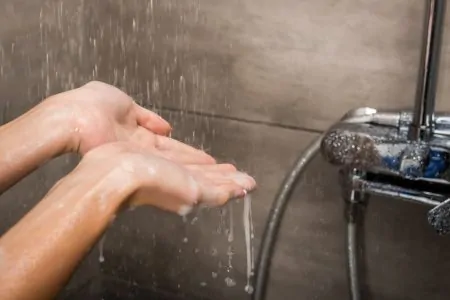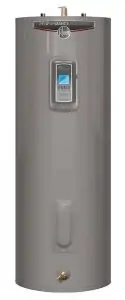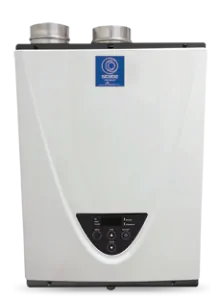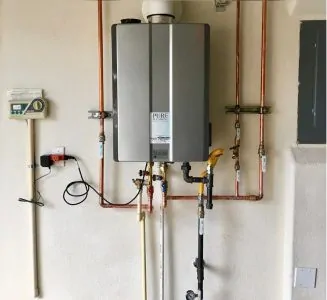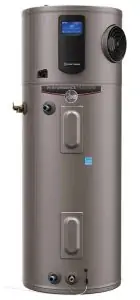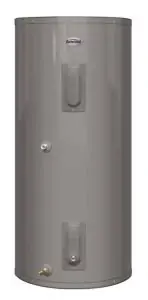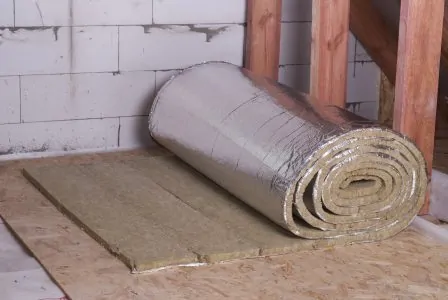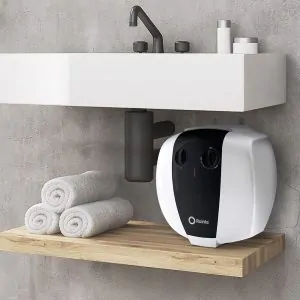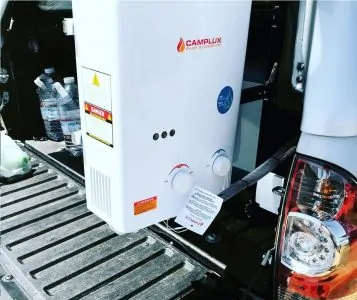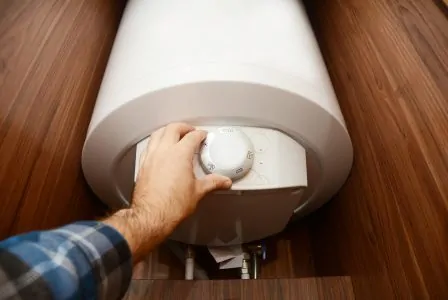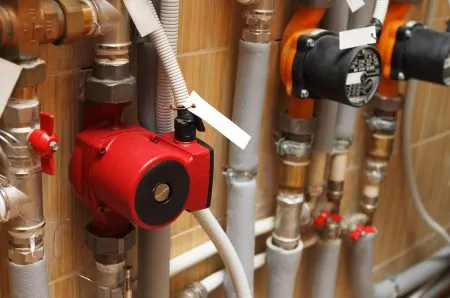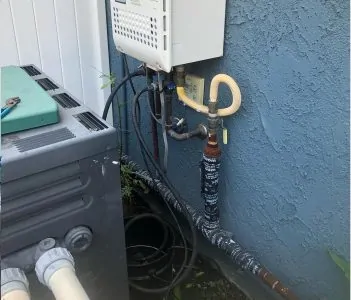Everyone likes a different temperature when they take a shower or bath. Whether you prefer intense heat or a cold shower after a long run, your favorite water temperature is largely a matter of personal preference.
However, comfort isn’t the only reason you should consider your water temperature more carefully. There are also safety concerns and energy-saving reasons that your water might need to be hotter or colder.
It can be difficult to know what exactly is the best water heater temperature for your thermostat, which is why we wrote this article. It will give you a better sense of which temperature to use and how to adjust your heater.
Key Takeaways
- Set the ideal water heater temperature to 120°F or 50°C to save energy and minimize burn risk.
- Adjust the thermostat on your water heater to achieve the desired temperature, which can be done easily on most modern heaters.
- Consider using a water heater controller kit to remotely control the temperature and operation of your water heater with a smartphone or tablet.
- Lowering the water heater temperature can save between 6% and 10% on energy costs annually.
Health and Safety Concerns
When you buy a water heater and install it in your home, the default temperature is usually set to 140 degrees Fahrenheit or 60 degrees Centigrade. If you take a bath or shower using only hot water at this temperature, you will be scalded or even burned.
Children and the elderly are at particular risk of serious burns. Children have delicate skin and the elderly can struggle to react to the hot water quickly without injuring themselves. This begs the question of why the temperature is set so high.
There are two main reasons.
1. Preventing Bacterial Growth
Bacteria grow better in lukewarm, stagnant water. There are exceptions to this; some bacteria thrive in extremely cold or hot temperatures. In general, the “danger zone” is between 40 degrees and 140 degrees Fahrenheit or 4 to 60 degrees Centigrade (1).
A setting of 140 degrees Fahrenheit or 60 degrees Centigrade is slightly higher than the danger zone. This makes it a safer temperature for preventing the growth of bacteria.
Many experts agree that a water heater temperature is still safe for the majority of people when it’s set at 120 degrees Fahrenheit or 50 degrees Centigrade.
The exceptions to this are people who have a suppressed immune system or chronic respiratory disease. If this applies to you, it’s best to stick with the recommended default of 140 degrees Fahrenheit or 60 degrees Centigrade.
Most modern water heaters have their tank temperature set at the industry default. However, they typically feature an anti-scald device that delivers it to the faucet at 120 degrees Fahrenheit or 50 degrees Centigrade (2).
Water heaters are specifically linked to legionella bacteria. These organisms tend to accumulate on the bottom of the water heater and can cause a form of pneumonia. The bacteria are usually transmitted by inhaling contaminated water droplets when we shower or bathe.
2. Marketing Benefits
When manufacturers sell a water heater, their priority needs to be client satisfaction. Energy-saving and water conservation are usually secondary to receiving positive feedback from their customers when they take a bath or shower.
If the water is lukewarm or scalding hot, the majority of users are unlikely to be very happy with their purchase. If you personally want one of these temperatures, all you need to do is adjust the heater’s settings.
Saving energy and water is not only good for the environment, but it is also good for your wallet and an efficient heater will help you save a potentially significant amount of money.
Water Temperature and Saving Energy
This is one aspect of water heater temperature that is sometimes overlooked. Setting the right temperature can save energy, whatever type of water heater you install. Not only that, but it will also save you money in the long run.
1. Set the Temperature to 120 F or 50° C
Unless you have a suppressed immune system or chronic respiratory problems, 120 degrees Fahrenheit or 50 degrees Centigrade is warm enough. You don’t need to set the thermostat of your water heater any higher. This temperature will also help you save energy.
Each time you turn down the temperature by 10 degrees Fahrenheit, you save 3% to 5% on your energy cost. This means lowering the temperature from 140 degrees to 120 degrees Fahrenheit or 60 degrees Centigrade to 50 degrees Centigrade will save you between 6% to 10% on your bill (3).
2. Choose an Energy Efficient Appliance
Not all water heaters are created equal. When you buy one, don’t simply look for the cheapest model. Buying it may save you a few dollars initially, but in time that difference will be lost due to increased energy consumption.
Instead, look for the energy factor as shown on the model. Experts recommend Energy Star models.
Energy factors between 0.67 and 0.70 are the most energy-efficient. The smaller the water heater, the more efficient it will be as there will be less heat loss (4).
If you can, choose a heater with a wide range of temperature control. You need one that will allow you to change the temperature precisely, one degree at a time. This means you will be able to set your ideal temperature, whatever your preference.
3. Use Cold Water
We aren’t suggesting you should take cold showers exclusively, but sometimes cold water will do. For example, for laundry loads or to wash your hands. Just make sure you use antibacterial soap. Every little change helps.
How to Adjust the Water Heater Temperature
There are five main types of water heaters available today. Let’s look a closer look at each one with regard to saving money on your energy bills. We will also explain how to change the water temperature for each kind.
Conventional Storage Tank Water Heater
These are the traditional water heaters that heat and store as much water as the tank can hold. They are insulated, so the water stays warm until it is needed.
If you want more hot water than the capacity of the tank, you will need to wait. It could take an hour or two for it to heat up again under normal conditions.
These are the cheapest and most common water heaters but they are not the most energy-efficient unless you install a timer. The heater will turn off when the water reaches the specified temperature.
To adjust the water temperature, all you need is a flat screwdriver.
- Turn off the water heater.
- Remove the top and bottom covers.
- Use a flat screwdriver to adjust the thermostat.
- Replace covers.
- Turn on the power again.
Tankless Water Heater
Tankless water heaters do not have a tank, as their name suggests. They use super-heated coils that heat water almost instantly on-demand. These heaters come in different sizes, depending on how much hot water you need.
They work best using natural gas. If you choose an electric one, it may actually increase your energy bill.
To adjust the water temperature, simply use the heater’s controls.
Heat Pump Water Heaters
This model uses the heat in the air to raise the water temperature. It uses electricity to transfer the heat rather than generate it. It also has a tank that needs to be cleaned regularly.
Heat pump water heaters can help save an average of 60% on your energy bill. However, they are quite expensive to buy and need a lot of space for installation. The pump is at the top and may require as much as 8 feet of vertical clearance to work as normal (5).
Solar Powered Water Heaters
As the name suggests, these water heaters use the power of the sun. They will need solar panels mounted on your roof. These will work great on sunny days and in warm climates. On cloudy or rainy days, however, you will probably need a backup water heater.
In terms of energy efficiency, these models are amazing but, unless you can get a Government grant, installing solar panels is very costly. It can also take several years to see a return on your investment (6).
Solar-powered water heaters have a control panel that you use to easily adjust the temperature.
Condensing Water Heaters
These use exhaust gas — the byproduct of gas used to generate heat — to further heat water (7). If your home runs on natural gas, a condensing water heater may be the best choice for you. Keep in mind that it usually requires a big tank, so it’s probably unsuitable for smaller homes.
You can easily set your perfect temperature from the control panel.
Technology
Today, there is specialist technology for almost any situation. You can buy and install a water heater controller kit. This will allow you to control your water heater’s temperature with your smartphone or tablet.
All you need is a working internet connection. You will be able to control your water heater from anywhere. If you leave to go on vacation and forget to turn it off, you won’t need to worry!
You can turn the heating off to save energy, even from the other side of the world. Just remember to turn it back on before returning home.
FAQs
Wrapping It Up
In an ideal situation, the best temperature to set your water heater to is 120 degrees Fahrenheit or 50 degrees Centigrade. This helps save energy and minimizes the risk of burns. It is warm enough to kill bacteria, but not so hot that you will accidentally get scalded.
Most modern water heaters have a simple way of adjusting them to achieve the ideal water heater temperature for your needs. You can even install a device to control the operation and temperature remotely using your smartphone or tablet.
